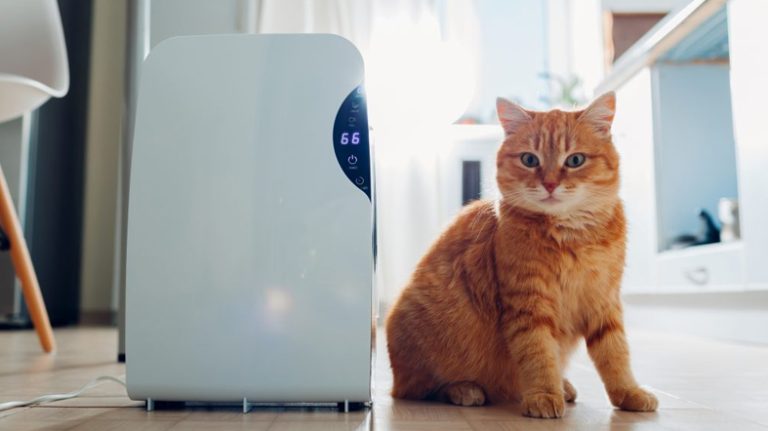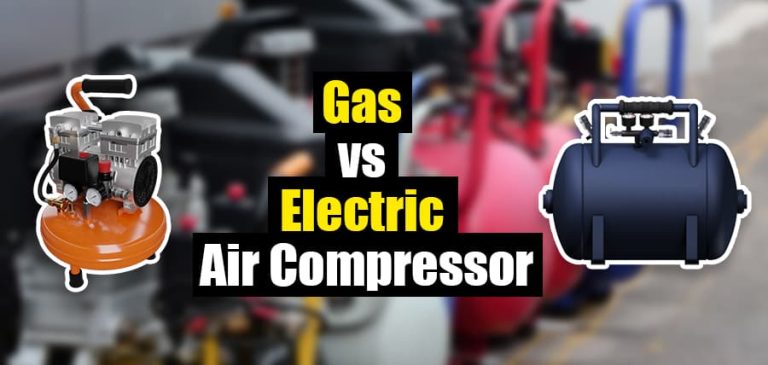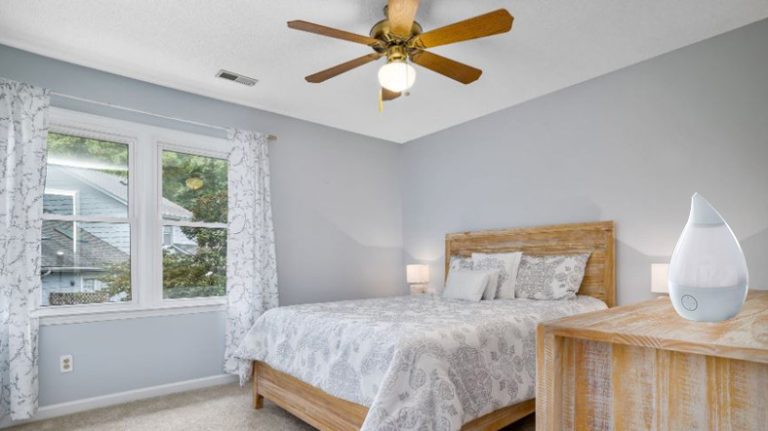Does an Air Purifier Cool a Room | Everything You Need to Know
An air purifier does not cool a room; it only improves indoor air quality by removing pollutants and allergens. However, using a portable air conditioner or a fan along with an air purifier can help create a cooler environment in a room.
Air purifiers are becoming increasingly popular as people become more aware of the importance of clean indoor air. These devices work by filtering out airborne particles such as dust, pollen, pet dander, and smoke, which can cause allergies and respiratory issues.
While air purifiers can’t cool the air like an air conditioner, they can help eliminate unpleasant odors and improve overall air quality. To cool a room, it is recommended to use a portable air conditioner or a fan in conjunction with an air purifier. These devices can help lower the room temperature by circulating cool air or creating a breeze. By combining the benefits of air purification and cooling, you can achieve a comfortable and healthy indoor environment.

How Does An Air Purifier Work?
Air purifiers are innovative devices that are designed to improve indoor air quality. These devices work by removing various pollutants and contaminants from the air, including dust, pollen, pet dander, smoke, mold spores, and other harmful particles. The basic functioning of an air purifier involves a simple yet effective process that helps to clean the air we breathe. Here’s how it works.
Filtration process
Air purifiers typically use a filtration system to trap and remove pollutants from the air. The air is drawn in through the device and passes through a pre-filter that captures large particles like dust and hair.
Next, the air passes through a high-efficiency particulate air (HEPA) filter which is capable of capturing small particles as small as 0.3 microns. This includes allergens, pollen, and some bacteria.
Some advanced air purifiers may also include additional filtration stages, such as activated carbon filters or ionizers, which further enhance the purification process.
Ionization process
Ionizers, also known as ion generators, produce negatively charged ions that attach to airborne particles. These charged particles then become attracted to positively charged surfaces, such as walls or furniture, causing them to be effectively removed from the air.
This process is particularly effective for particles that are smaller than what traditional filters can capture, such as smoke or volatile organic compounds (VOCs).
UV-c light technology
Certain air purifiers utilize ultraviolet-c (uv-c) light technology to target and eliminate harmful microorganisms, including bacteria, viruses, and mold spores. The uv-c light damages the DNA of these microorganisms, rendering them unable to reproduce and causing them to be effectively neutralized.
Ozone generators
Ozone generators are a type of air purifier technology that produces ozone, a molecule composed of three oxygen atoms. These machines release ozone into the air, which can effectively eliminate odors and some types of bacteria. However, excessive exposure to ozone can be harmful to human health, so caution must be exercised when using ozone generators.
Combination systems
Some air purifiers combine multiple technologies, such as filtration, ionization, and uv-c light, to provide comprehensive air purification. These combination systems offer the advantages of different technologies, providing a more thorough and efficient cleaning of the air.
Air purifiers work by employing various technologies to remove pollutants from the air we breathe. Whether it is through filtration, ionization, uv-c light, or a combination of these methods, air purifiers play a vital role in creating a healthier and cleaner indoor environment.
The Cooling Effect
Discussion on Whether Air Purifiers Have The Ability to Cool Down a Room
Air purifiers are commonly used to improve indoor air quality, but can they also provide a cooling effect? Let’s delve into this topic and understand the potential cooling abilities of air purifiers.
Explanation of How Some Air Purifiers Can Provide a Cooling Sensation
Air purifiers primarily function to clean and filter the air by removing contaminants such as dust, allergens, and odors. While they are not designed specifically to cool down a room like an air conditioner, some air purifiers can provide a slight cooling sensation through certain mechanisms. Here’s how.
- Circulation of air: Air purifiers often have a built-in fan or multiple speed settings that enhance air circulation within a room. This increased airflow can create a gentle breeze, resulting in a perceived cooling effect.
- Evaporative cooling: Certain air purifiers utilize a cooling system that incorporates water or ice packs. As the air passes through the cooling media, it undergoes a process known as evaporative cooling. This process can reduce the temperature in the immediate vicinity of the air purifier, providing a refreshing sensation.
- Temperature control: Some advanced air purifiers come equipped with temperature sensors and automatic settings. These purifiers can monitor the ambient temperature and adjust the fan speed accordingly to create a more comfortable environment.
- Reduced pollutant levels: By removing pollutants from the air, air purifiers can indirectly contribute to a cooler room. Pollutants like dust and pet dander can accumulate on surfaces, trapping heat and making the room feel warmer. By eliminating these particles, air purifiers can help maintain a cleaner and cooler environment.
- Enhanced comfort: Even though air purifiers may not have a direct cooling effect on the room temperature, they can improve overall comfort by reducing stuffiness caused by air pollution and allergens. When the air feels cleaner and fresher, it can create a perception of a cooler environment.
Factors Affecting Cooling Capability
Does An Air Purifier Cool A Room?
Air purifiers are known for their ability to clean indoor air by removing contaminants such as dust, pollen, and pet dander. But can they also cool a room? The answer to this question is not as straightforward as you might think.
Several factors influence the cooling capability of an air purifier. In this section, we will discuss these factors in detail.
Explanation of The Factors That Influence The Cooling Capacity of an Air Purifier
- Size of the room: The size of the room plays a crucial role in determining how effectively an air purifier can cool the space. Larger rooms require air purifiers with higher airflow capacity to ensure proper air circulation and cooling. On the other hand, smaller rooms can be efficiently cooled by air purifiers with lower airflow capacity.
- Power of the air purifier: The power or strength of an air purifier is measured in terms of its clean air delivery rate (cadr). The higher the cadr, the more efficiently the air purifier can circulate and cool the air in a room. It is essential to choose an air purifier with an appropriate cadr rating that matches the size of the room, ensuring optimal cooling performance.
- Airflow design: The design of the air purifier plays a significant role in determining its cooling capacity. Air purifiers with a well-designed airflow system can distribute cool air more efficiently throughout the room, resulting in better cooling performance. Look for air purifiers with features like oscillation or multi-directional airflow to enhance the cooling effects.
- Ambient temperature: The ambient temperature of the room can affect the cooling capability of an air purifier. In general, air purifiers do not actively lower the temperature of the air. However, they can create a cooling effect by removing hot and stale air, allowing fresh and cooler air to circulate. This effect may be more noticeable in rooms with higher ambient temperatures.
- Humidity levels: The levels of humidity in a room can also impact the cooling performance of an air purifier. Higher humidity levels make the air feel warmer, while lower humidity levels can make the air feel cooler. Air purifiers with built-in humidifiers or dehumidifiers can help regulate the humidity levels, creating a more comfortable environment.
Enhancing Air Purifier’s Cooling Effect
When it comes to air purifiers, many people wonder if these devices have a cooling effect on a room. While it’s true that air purifiers are primarily designed to clean the air by removing pollutants and particles, they can also provide a slight cooling effect under certain circumstances. In this section, we will explore some tips and tricks to optimize the cooling effect of an air purifier.
Frequently Asked Questions
How Does an Air Purifier Differ from an Air Conditioner?
While both appliances work to improve indoor air quality, they serve different purposes. An air purifier filters out contaminants from the air such as allergens, dust, and smoke particles. On the other hand, an air conditioner cools the room by removing heat and humidity, providing a cooler and more comfortable environment.
Can an Air Purifier Help Reduce Stuffiness in a Room?
Yes, an air purifier can help reduce stuffiness in a room by filtering out pollutants and improving air circulation. It can eliminate dust, pet dander, and other airborne irritants that may contribute to a stuffy feeling. However, if the stuffiness is due to high humidity, an air purifier alone may not fully address the issue.
Is It Necessary to Have Both an Air Purifier and an Air Conditioner?
Having both an air purifier and an air conditioner can complement each other in improving indoor air quality and comfort. An air purifier can remove pollutants, allergens, and odors from the air, while an air conditioner provides cooling and dehumidification. Using them together can create a healthier and more pleasant indoor environment.
Do Air Purifiers Consume a Lot of Energy?
The energy consumption of an air purifier depends on various factors such as the size of the unit, its filtration technology, and the fan speed settings. Generally, modern air purifiers are designed to be energy-efficient. It is advisable to choose an energy star-certified model and adjust the settings to optimize energy usage and maintain clean indoor air quality.
Can An Air Purifier Help With Allergies?
Yes, an air purifier can help alleviate allergies by capturing and removing airborne allergens such as pollen, pet dander, and dust mites. Look for air purifiers with HEPA filters, as they are highly effective in removing allergens from the air. However, it is important to note that an air purifier cannot eliminate allergens, and other allergy management measures may still be necessary.
Conclusion
Air purifiers are a popular choice for homeowners seeking to improve indoor air quality. While they are effective in removing airborne pollutants, it is essential to understand that they do not cool a room. The purpose of an air purifier is to cleanse the air by capturing and eliminating particles like dust, pollen, and pet dander.
It works by pulling air through a filtration system, which traps these undesirable particles. However, this process does not alter the temperature in any way. If you’re looking to cool a room, consider investing in a fan, air conditioner, or evaporative cooler.
These options actively lower the temperature by moving or circulating air, providing a more comforting and cooling effect. Keep in mind that while an air purifier can enhance the quality of your indoor air, it is not suitable for bringing down the temperature in a room.



![Where is the Reset Button on Kobalt Air Compressor [Explained]](https://airanswer.com/wp-content/uploads/2023/07/where-is-the-reset-button-on-kobalt-air-compressor-768x432.jpg)
![[Solved] How to Fix E8 Error Code Air Conditioner](https://airanswer.com/wp-content/uploads/2023/07/How-to-Fix-E8-Error-Code-Air-Conditioner-1-768x431.jpg)
![How to Reset Blue Air Filter Light [Easy Steps]](https://airanswer.com/wp-content/uploads/2023/07/how-to-reset-blue-air-filter-light-768x432.jpg)